Regulation 2019/1784 sets a minimum efficiency for welding equipment power sources , and a maximum power consumption in idle state. It also sets resource and information requirements. In particular, where a display is provided on welding equipment it must indicate the use of welding wire or filler material in grams per minute or equivalent standardised units of measurement. This is expected to reduce the consumption of wires and electrodes.
Source: estimations from the Ecodesign Impact Accounting Overview Report 2023
Scope
The following table shows some examples of products in scope and out of scope in the Ecodesign Regulation:
| In Scope | Out of Scope |
|---|---|
|
|
Check the complete list in the Ecodesign Regulation.
Ecodesign Requirements
Ecodesign requirements apply to welding equipment sold, business-to-business in the EU, used in industry sectors like construction, energy and transport.
The objective of the regulation is to limit the environmental impact of these products in a way that is sustainable for business and effective for the users. This is achieved by requirements for welding equipment on mandatory efficiency limits for the power supply and circular economy aspects (spare parts availability and information on the quantities of welding wire or filler material used). There are also mandatory information requirements regarding performance, efficiency and repair and disposal.
Highlights
In 2020, welding equipment in scope of the regulation consumed 6.4 TWh/a of electricity, and without measures this would increase to 6.5 TWh/a in 2030. By far the largest part is consumed in active (arc-on) modes. Due to the measures, 0.9 TWh/a can be saved in 2030.
Facts & Figures
This graphic shows the estimated sales, stock, energy consumption (primary, electric or fuel), greenhouse gas emissions, consumer expenses and business revenues for years 2010 and 2030. The estimated values inside the graph bars are those from the EIA ECO-scenario, they include the effects of Ecodesign and Energy Labelling measures.
The difference with the business as usual (BAU) scenario without these estimated measures is shown next to the graph bar. These figures indicate the estimated savings obtained due to the measures.
Product: Welding Equipment Measures: Regulation (EU) 2019/1784 |
|---|
| The striped lines in the charts show the 'Effect of the Regulations' |
SALES (x1000 units)  | STOCK (x1000 units) 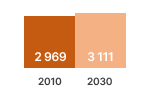 | Electricity (TWh/a) 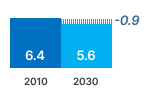 |
GHG-EMISSION 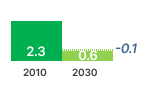 | CONSUMER EXPENSES 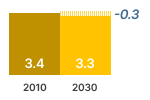 | REVENUES 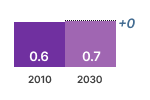 |
Source: estimations from the Ecodesign Impact Accounting Overview Report 2023
Expected Savings
In 2020, welding equipment in scope of the regulation consumed 6.4 TWh/a of electricity, and without measures this would increase to 6.5 TWh/a in 2030. By far the largest part is consumed in active (arc-on) modes. Due to the measures, 0.9 TWh/a can be saved in 2030.
Total EU27 Electricity for Welding Equipment
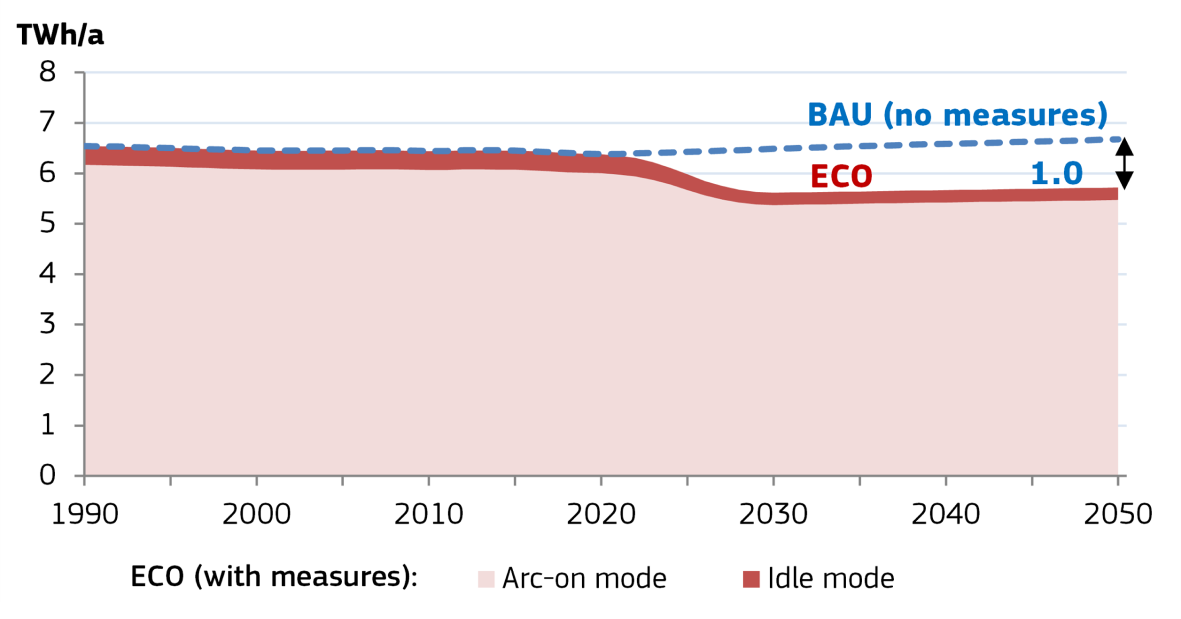
Source: estimations from the Ecodesign Impact Accounting Overview Report 2023

Policy
Ongoing legislative work
Please check the ongoing initiatives on the Have your say portal.
Regulation (EU) 2019/1784 of 1 October 2019 laying down Ecodesign requirements for welding equipment pursuant to Directive 2009/125/EC of the European Parliament and of the Council (Text with EEA relevance).
What is the aim of the regulation?
- It sets out Ecodesign requirements for the placing on the market or the putting into service of electrical mains-operated welding equipment.
Key points
- It lists the welding processes to which the regulation applies and those to which it does not.
- The Ecodesign requirements are set out in Annex II, and include:
- minimum efficiency levels for the power source used;
- maximum ‘idle state’ (similar to standby) power consumption;
- non-energy-related requirements to make it easier to repair, disassemble, prolong the useful lifetime of and reuse welding equipment and components, including
- making spare parts available to professional repairers for a minimum period of 10 years
- making specified repair and maintenance information freely available to professional repairers via the website of the manufacturer of the welding equipment, the importer or authorised representative.
- The regulation sets out the conformity assessment procedure, and in Annex III the measurement methods and calculations to be followed based, where available, on harmonised standards adopted by the European standardisation organisations.
- National authorities must apply the verification procedures laid down in Annex IV when carrying out market surveillance checks.
- Manufacturers, importers or their authorised representatives must not offer for sale products which can detect when they are being tested and change their performance accordingly.
- Annex V sets out indicative benchmarks for the best-performing products and techniques available on the market in terms of power source efficiency and maximum idle state power consumption.
- The European Commission must review the regulation in the light of technological progress and present its results, including, if appropriate, a draft revision proposal no later than 14 November 2024.
From when does the regulation apply?
It applies from 1 January 2021.
Disclaimer: please pay attention to possible updates/changes as indicated in the Official Journal (green dot)

